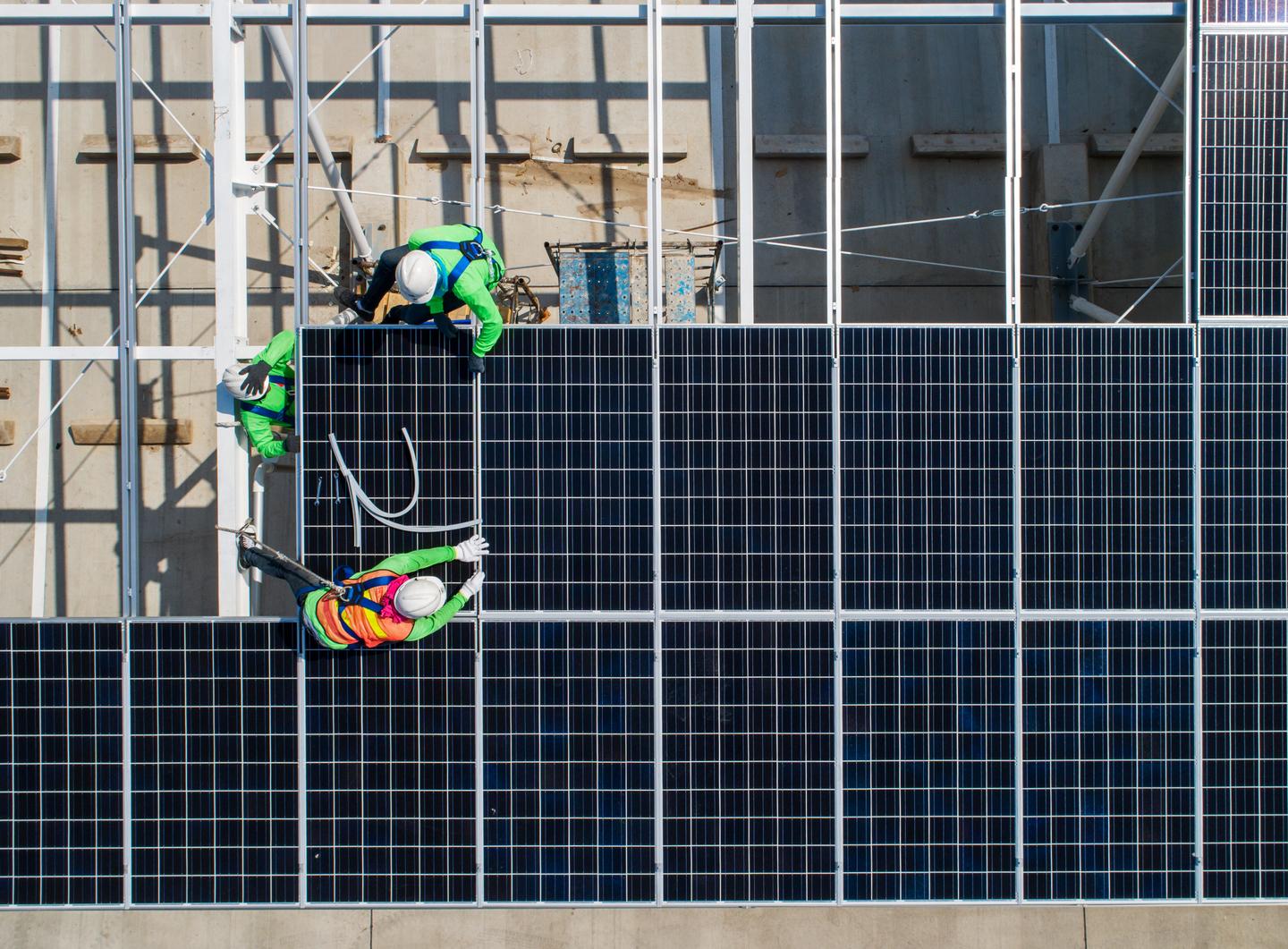5 Energy Trends to Watch Out for in 2021
We’re nearing the end of an extraordinary year, in which COVID-19 disrupted life as we knew it. All of us had to face challenges and deal with the small and big changes around us. With lockdowns all across the globe, projects and installations being put on hold, or tenders being postponed, the energy sector was no exception. However, the global pandemic also boosted creativity, digitization, and the creation of new services. So, what can we expect to see in energy next year?

We shared this question with domain experts Pirja Heiskanen, Lauri Anttila, Emile Stoverinck, and Jan Hermann, and compiled a list of their top trends for energy in 2021. Here’s what they would bet on.
#1 Customer-centricity wins
As the market situation becomes more and more volatile, customer-centricity will be key to retaining and building loyal customer bases and eventually ensuring healthy business.
Not long ago, most people did not really care about their energy provider. They would sign a contract once and be happy to never think about it again. However, these customers are becoming increasingly rare. People have become accustomed to high-quality digital services in most other areas of life, and their expectations towards transparency and flexibility are now much higher. As a result, clients become more likely to change energy providers.
The needs of end-users are also evolving. For example, an increase in electric vehicles - and the possibility to use their batteries as energy storage - or private solar panels and heat pumps create a need for more holistic solutions. It’s time for energy companies to walk their talk and put customer-centricity at the heart of every decision. Customer feedback and insights will increase the acceptance of new tools and validate underlying assumptions. Moreover, customer-centricity will enable power companies to bridge the delivery gap, help retain, grow, and refine their customer base, and ultimately, stay relevant in an evolving market.
#2 Smart grids full power ahead!
More efficient grid works and smarter grids are a key element in the energy sector’s transformation.
Over the coming decade, Germany plans to invest around 50 billion euros in infrastructure to ensure more efficient grid work and smarter grids. However, improving the infrastructure alone will not do the trick. Technologies like IoT and asset-tracking devices, inspection drones, or satellites produce a lot of data. Sharing that data with all relevant stakeholders and empowering them to find the correct answers to the right questions will be key to making grid operation more resilient, flexible, and sustainable.
Furthermore, applying analytics to the huge volume of data generated across the energy and utilities sector can provide unique insights related to customer usage patterns. This knowledge enables demand forecasting and effective energy management, but it can also help prevent fraud, reduce loss, improve compliance with regulatory requests, and improve customer services. Using data in the right way will increase user satisfaction and ultimately help companies turn data into money.
#3 The dynamics between producers and consumers keep changing
The interaction between producers, consumers, and grid providers is becoming more collaborative.
In their latest report, the German Solar Industry Association (BSW) mentioned that more than 100,000 new prosumers entered the market between February 2019 and January 2020. These people are both producers and consumers of energy, e.g. homeowners and industrial plants with photovoltaic panels on their roofs, which makes them more autonomous. Every prosumer is a potential energy manager who needs to collaborate with incumbent producers and grid providers, and their impact grows with their numbers. But with a rising number of “micro entities”, how can energy companies take them into consideration when production and demand are still so volatile? That’s where smart meters come into the picture.
Smart meters help to close the gap between consumers, producers, and grid providers. Consumers get an overview of their consumption profile and can detect saving potentials through changing routines or gearing up the infrastructure with e.g. storage facilities. For producers and grid providers, smart meters offer valuable user insights and set the basis for establishing demand response on scale. The backbone of this transformation is a grid that thinks one or two steps ahead and gives the market data-based recommendations on when to store, sell, transform, or consume energy.
#4 Automated and AI-augmented energy management is needed more than ever
An increasing amount of intermittent energy production causes shorter lead times and increases the need for nearly real-time management of both production and demand. Analytical solutions provide the real-time analysis needed to optimize operational performance and decision-making.
As a consequence of shorter lead times in the market, the focus in energy management is moving from long-term planning to enabling near real-time reaction to changes. This calls for largely automated and data and AI-augmented bidding and dispatching processes for both energy companies and companies that work in energy-intensive sectors.
The growing adoption of cloud platforms across the energy and utility sector is expected to have a positive impact on market growth. However, the market is facing major challenges in data security as well as privacy concerns. In addition, many energy companies lack skilled analytical expertise while struggling with the integration of new solutions into legacy IT architecture. To balance these limiting factors and to profit from the expected market growth, energy companies need to invest and increase their IT competences.
#5 Digital and physical will co-evolve
Hardware and digital technologies will start to co-evolve, both needing the other to deliver the necessary changes in efficiency and sustainability.
Traditionally speaking, energy has been a hardware heavy industry with a strong focus on physical processes. Improvements in hardware and how it’s operated will be as critical in the future as they were in the past, but they won’t be enough to make a difference. Energy companies aiming to become more efficient and sustainable will have to put as much focus on digital as they have on hardware. Software and data analytics will be needed to support future improvements in generating, distributing, and consuming electrical energy.
What does this mean for energy companies?
To keep up with continuous changes and evolving demands, energy companies will have to focus on their digital competencies. They will have to invest, build knowledge, and join the competition for skilled IT experts. The good news is they do not have to do everything on their own. Experienced partners like Futurice can help companies in the energy sector build a more resilient business and thrive in a rapidly changing environment.
Dive deeper into this topic with our energy page, and make sure to check out our latest whitepaper to learn how energy companies can use customer-centricity, data, and ecosystems to future-proof their business.
 Christina KleinMarketing & Communications Manager
Christina KleinMarketing & Communications Manager


